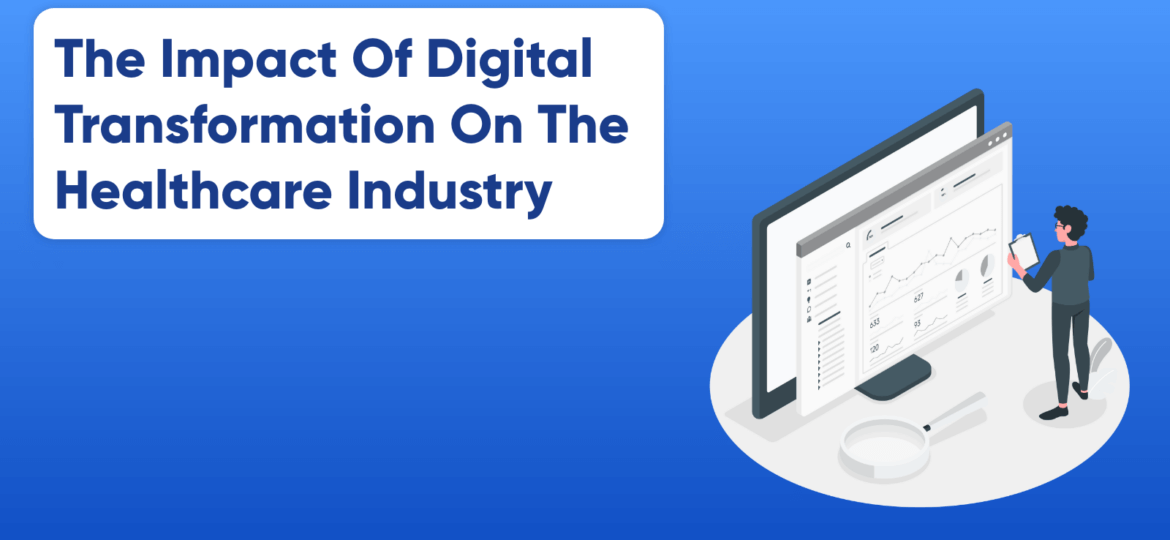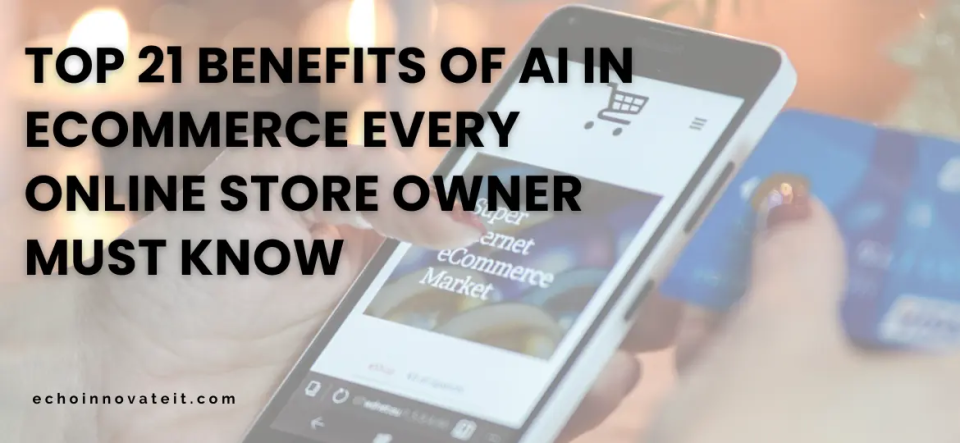Digital Transformation in Healthcare 2025: Embracing Mobile-First Healthcare Innovation
As we step into 2025, digital transformation in healthcare is redefining how care is delivered, accessed, and managed. Healthcare organizations across the United States are rapidly adopting innovative technologies like AI, mobile apps, Internet of Medical Things (IoMT), and cloud computing to meet growing patient expectations and improve clinical outcomes. The integration of mobile-first strategies, especially through Android and iOS apps, is making healthcare more accessible, efficient, and personalized for both patients and providers.
The Rise of Mobile Healthcare: iOS and Android Apps Leading the Way
Mobile technology is at the heart of digital healthcare. Patients now demand fast, user-friendly, and secure mobile experiences. From appointment scheduling to telehealth consultations, mobile apps for healthcare are transforming patient engagement. In 2025, the majority of U.S. consumers rely on mobile health apps for managing chronic conditions, accessing virtual care, tracking fitness data, and receiving medication alerts. Whether on Android or iOS, mobile healthcare apps now serve as digital front doors to clinics, hospitals, and telemedicine platforms.
Key Technologies Driving Healthcare Innovation in 2025
Artificial Intelligence (AI): AI is enhancing diagnostics, clinical decision-making, and patient triage. Chatbots powered by natural language processing are being used to guide patients through symptom assessments before seeing a provider.
Telehealth and Virtual Care: Telemedicine has moved beyond video calls. It now includes integrated care platforms that handle scheduling, documentation, and follow-up, all within mobile or cloud-based ecosystems.
Internet of Medical Things (IoMT): Connected devices such as smart wearables and remote monitoring sensors are collecting real-time data to support proactive and personalized care strategies.
Cloud & 5G Integration: Cloud computing and high-speed 5G networks enable real-time communication, secure data sharing, and instant access to high-resolution medical imaging and reports across multiple devices.
How Healthcare Startups and Enterprises Benefit
Healthcare startups are leveraging mobile app development to deliver innovative solutions like AI-driven health tracking, remote patient monitoring, and on-demand virtual clinics. Enterprises are embracing EHR interoperability, mobile-first patient portals, and API integrations to streamline operations and reduce administrative burden. These advancements are helping healthcare providers deliver better care, faster services, and more personalized health experiences.
Prioritizing Trust, Compliance, and E-E-A-T in Healthcare Content
With strict regulations and patient privacy concerns, digital transformation must also address trust and security. Following Google’s E-E-A-T guidelines—Experience, Expertise, Authoritativeness, and Trustworthiness—is essential for building a credible online presence. Healthcare websites and apps should highlight medical expertise, comply with HIPAA regulations, include secure design practices, and deliver patient-centered content.
Optimizing for SEO and Mobile Performance
To succeed in 2025’s competitive digital landscape, healthcare organizations must focus on SEO best practices. Use high-intent keywords like “healthcare app development USA,” “AI in healthcare,” “telehealth platforms,” and “remote patient monitoring apps.” Ensure fast page load times, mobile responsiveness, structured data markup, and content that answers real patient and provider questions. Publishing expert-authored blogs, patient success stories, and healthcare app case studies can significantly boost trust and organic reach.
Revolution in technology has entirely transformed the way people shop, travel, and do their other stuff. It is slowly and gradually making a significant impact on the healthcare industry. The digital transformation in the healthcare industry provides better care to patients. The digital transformation will help healthcare providers understand the requirements of the patient, streamline operations, build loyalty and trust and provide a better user experience.
However, collecting and extracting data from digital communications, and understanding the requirements of target users will prove valuable that will help healthcare providers to analyze new ways of adding value by building loyalty and trust. Your healthcare business needs to keep up with the digital transformation in the healthcare industry. It can be challenging for a healthcare provider to choose the technology that is worth investing in. For significant results, you need to adapt to the digital era.
As a matter of fact, the US Healthcare market is huge and it is found that at a CAGR of 29.6%, its digital market from 86.4 Billion in the year 2018 may reach 504.4 Billion USD in the year 2025.
Therefore, you need to know the complete picture of digital transformation in the healthcare industry. In this blog, we shall be covering the parameters like the role of emerging technologies that are transforming the healthcare industry and how you can transform your healthcare business using these technologies.
How Different Technology Trends Are Digitally Transforming The Healthcare Industry?
A Progressive Web App (PWA) is a web app that tries to replicate the behavior of a native app. They’re designed for quick loads, push alerts, and use while offline or with poor network access. PWAs are similar to native applications in that they may be installed on a user’s device. However, they are developed using standard web technologies like HTML, CSS, and JavaScript.
As a result, consumers no longer need to download an app from an app store. Also, PWAs are more accessible and more straightforward to produce than native applications. PWAs provide the conveniences of a native app while still being accessible through a web browser. To close the gap between native applications and the web, PWA strives to provide a unified and consistent user experience. With PWAs, business owners can avoid the battle of choosing between a native app vs hybrid app.
Telemedicine
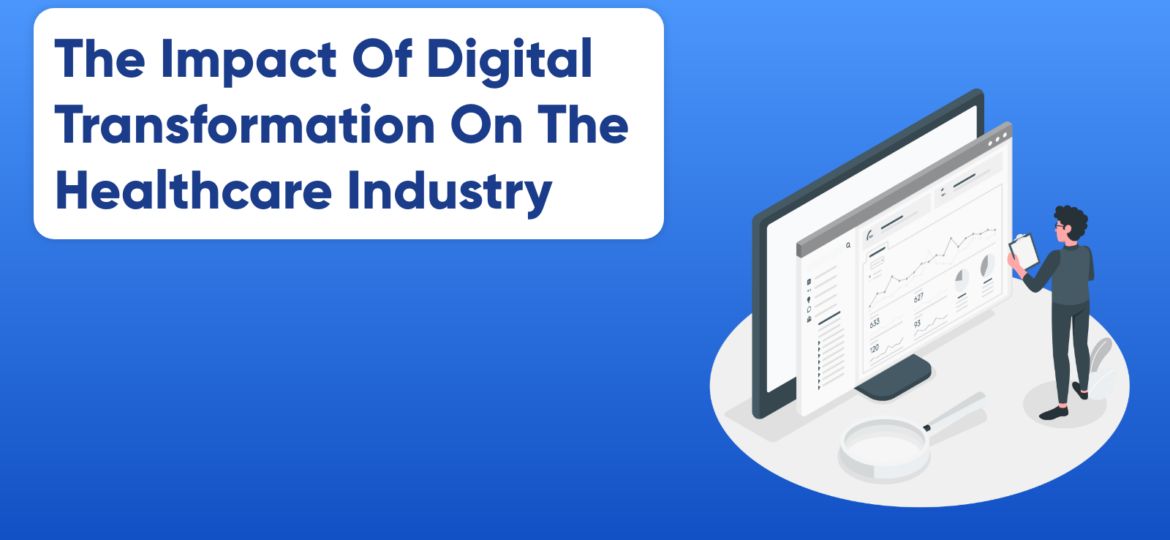
Remember the time when you have to wait for a few hours in a row in the clinic or hospital after getting an appointment with the doctor? By the same token, you would have to wait for several days to get your test results earlier and revisit the doctor. Fortunately, that era has gone by now.
The interaction between patients and healthcare professionals is transforming due to different innovative solutions. Be it searching for a doctor for scheduling a virtual appointment or communicating with doctors, telemedicine solutions enable people’s access to health professionals on demand. In the US healthcare market, telemedicine evolution has been one of the most significant transformations. Due to limitations in access to healthcare providers in the USA, telemedicine is emerging meticulously. According to 90% of surveyed healthcare executives, organizations have started integrating a telemedicine system.
A virtual appointment is one of the best examples of Digital Transformation in the healthcare industry, virtual appointments, help patients and doctors easily get in touch in rural areas where healthcare is limited. Patients facing mobility challenges can utilize telemedicine. This technology can also be used in managing patients at high risk and tracking patients’ health conditions or activities remotely by using IoT-based health sensors and wearable devices.
It is important to keep in mind that your telemedicine app should act in accordance with the legislation in your targeted regions or country.
Virtual Reality in Healthcare
The Web App Manifest is a JSON file that gives developers command over their app’s presentation and behavior. They may hide the URL bar and make it a full-screen app. It also provides a convenient location for users to keep track of their app’s information, such as its starting point and name. You may use this video as a jumping-off point for setting up your new app on any computer or mobile device, which is the film’s primary purpose.
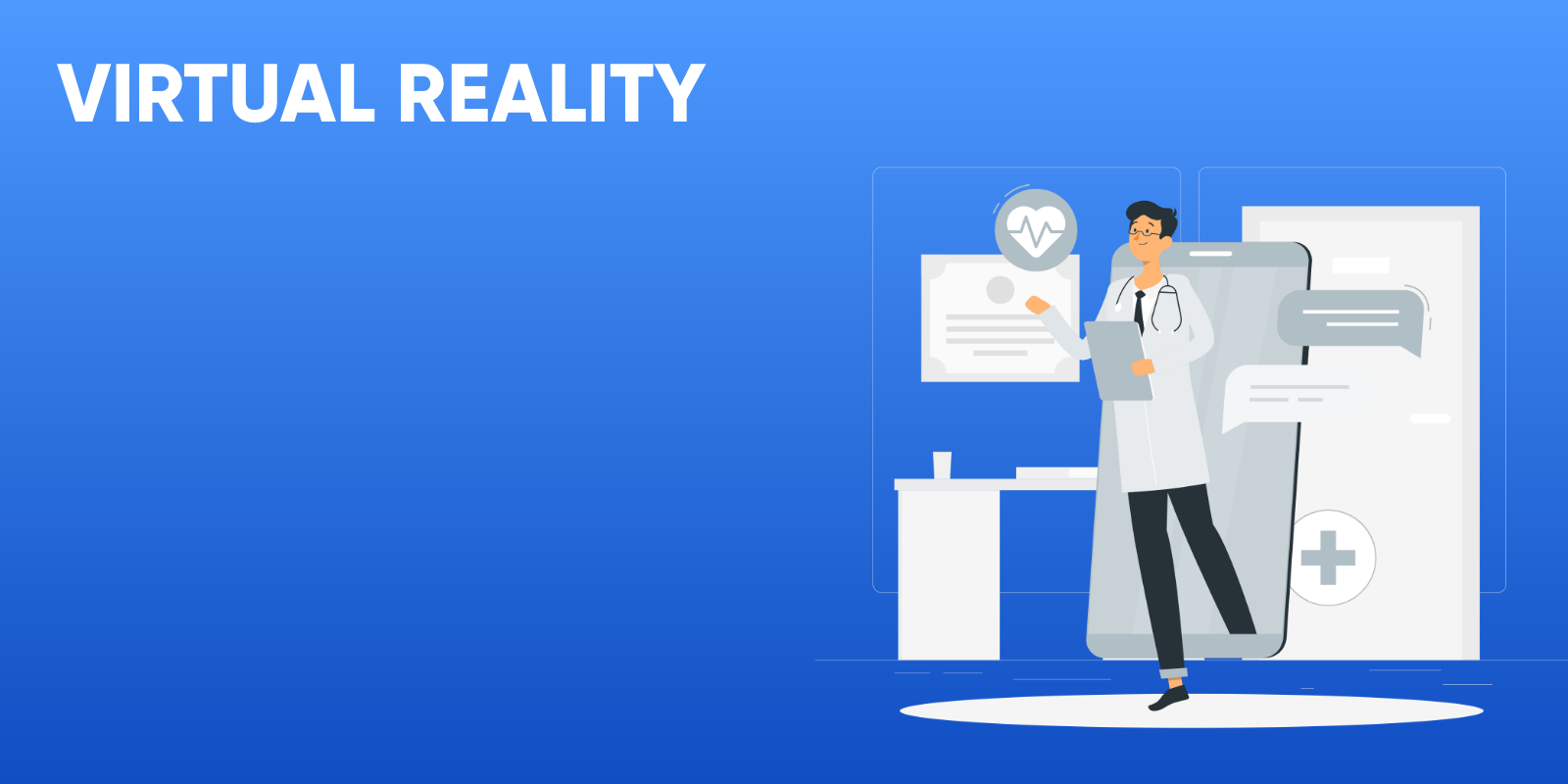
As a matter of fact, Virtual Reality is a technology that uses the computer-generated simulation of a 3-D image or environment that enables a person to hear, see and interact using special equipment, such as headsets. Virtual Reality takes users inside a virtual experience, unlike traditional user interfaces. VR technology is helpful in the healthcare industry for providing a more patient-focused approach.
Here is one example of a patient who had colon cancer and she was getting chemotherapy every week for around 6 years. She spent almost 4.5 hours during the chemotherapy session ready reading books, chatting, or watching television.
At the time of infusion, she sometimes wished to go to beaches to relax. But, she couldn’t go in her real-life because her skin was too sensitive to go out in the sunlight. But VR technology made it possible for her to live her dream by simulating a beach-like environment where she could feel like she was sitting on the beach and enjoying the sunbath.
Most of the patients have loved this experience and are fond of using virtual reality in a healthcare setting. As a matter of fact, virtual reality will continue to grow in the upcoming years. As per the research from GlobeNewsFire, by the year 2026, the market for virtual reality in healthcare will reach $7billion. The healthcare industry is in its initial stages of technology and has started to realize where technology can be used.
Let’s see how you can transform your healthcare business using Virtual Reality technology in the healthcare industry:
Pain Reduction
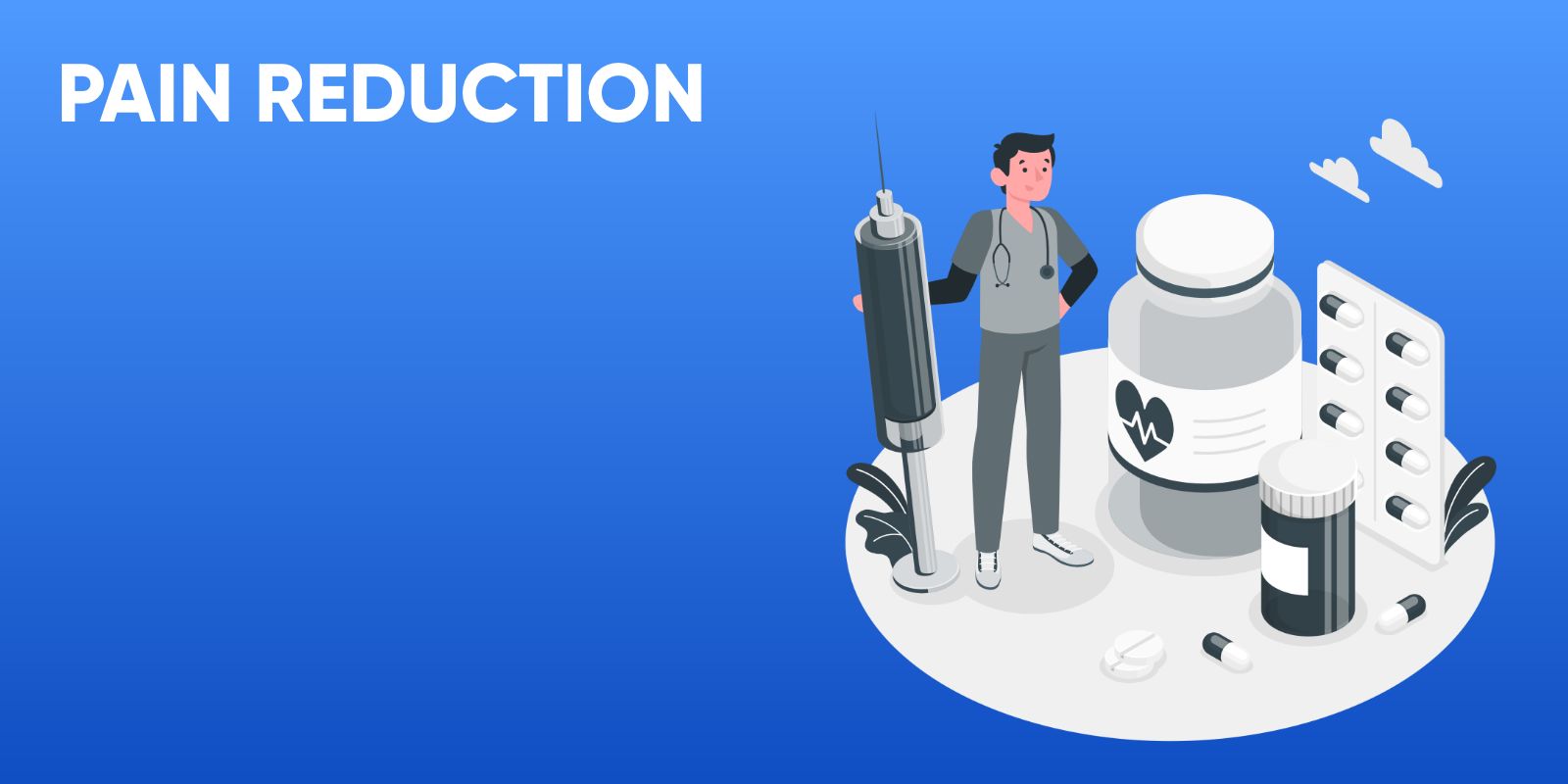
A program was conducted in 2019 by Children’s National Hospital in Washington, DC that included a VR headset for children who required removing stitches, sutures like procedures.
The program involved approximately 40 children along with age criteria of between 7 to 23. Each child was given a VR headset enveloped in shielded gear to cut down germs. After that, children had to select between different scenarios which included walking through a jungle, talking with a friendly snake, and taking a roller coaster ride. VR headsets were connected to screens so that parents could observe and see what their children were watching.
During the entire activity, the kids did not experience any pain, and parents were thrilled to see the behavior of their child as their child was happy and tolerated the procedure peacefully. However, most healthcare institutes are adopting VR technology for pain reduction therapies.
Also Read:
Pacing up recovery in physical therapy
Physical therapies for patients can be made more enjoyable using VR technology by engaging patients in a simulated environment. According to the research, after using VR technology, children with a health conditions like cerebral palsy noticed an improvement in their mobility.
VR technology is widely in use in speeding up recovery in physical therapy. Neuro Rehab VR being one of the leading providers in Virtual Reality Physical Therapy has introduced a gamified approach to physical therapy. The company has developed VR training exercises with machine learning to customize each exercise to the patient’s therapeutic requirements.
VR simulations to understand problems from someone else’s perspective
Embodied Labs uses Virtual Reality technology to simulate what it seems like to live with existing health conditions. It enables people to experience life from someone else’s perspective by wearing a VR headset and interacting with 360-degree videos.
VR simulations can help people to understand the feelings and experiences of a person suffering from a deadly disease. It can be also helpful for students who are studying or conducting research in understanding the disease and symptoms of the disease and how it feels like in real life. Thus, a major example of Digital Transformation in healthcare industry
Artificial Intelligence in Healthcare Industry
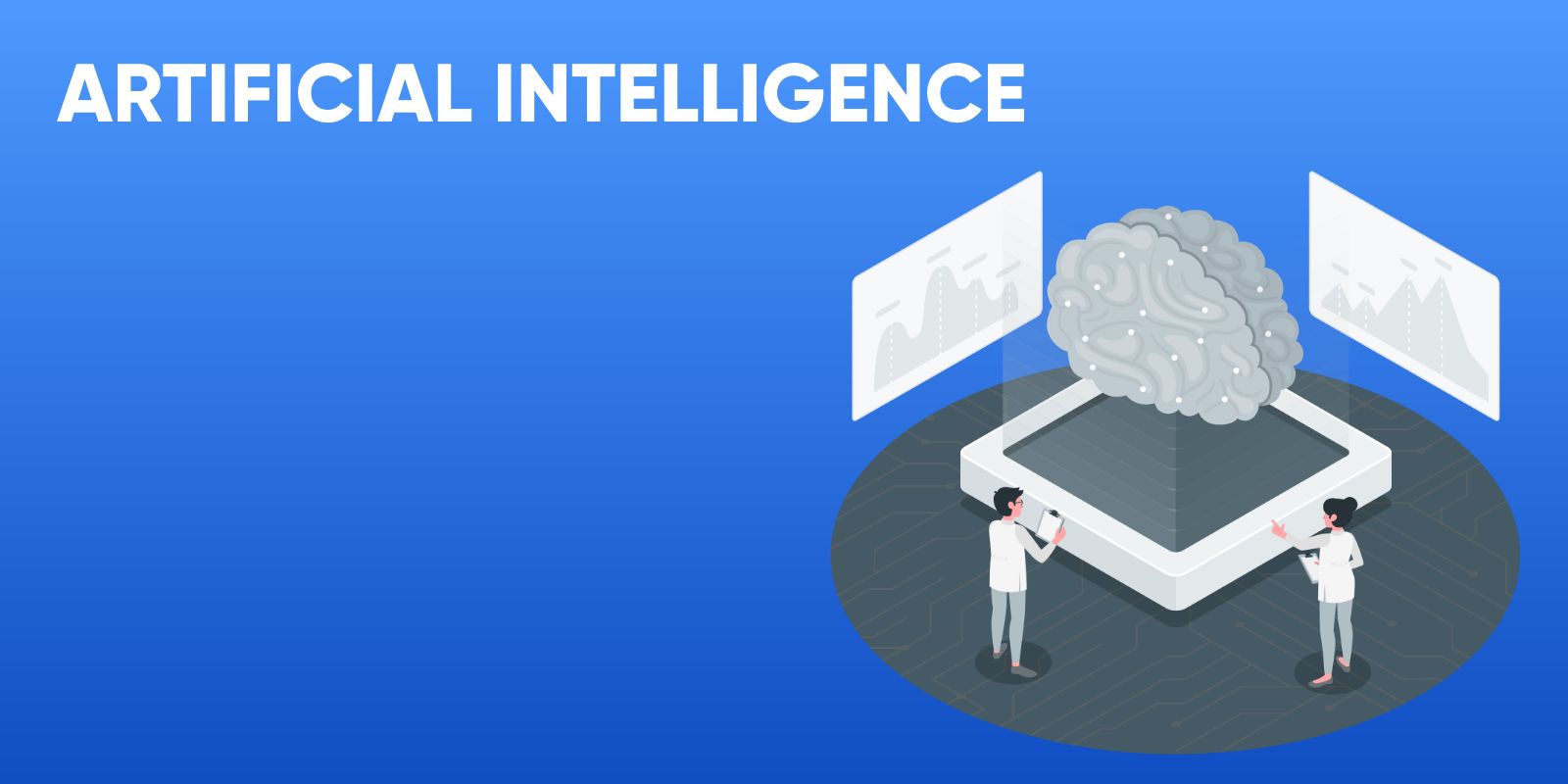
The lives of doctors, patients, and hospital staff have become easier with the help of Artificial Intelligence. As it helps in doing the tasks at a fraction of cost and in less time than was earlier.
Artificial Intelligence is renovating and strengthening modern healthcare with the help of machines. Everything is changing be it surveying chronic diseases or conducting the risk assessment.
Artificial Intelligence provides several benefits over clinical decision-making and traditional analytics. It enables humans to get accurate and précised insights into patients’ diagnostics and treatment processes.
Let’s have a look at some of the ways how Artificial Intelligence can bring digital transformation to the healthcare industry:
Diagnosing and reducing errors
In the US, approximately 10% of all deaths were the result of misdiagnosing the error. Artificial Intelligence technology promises to improve diagnosis and diagnostic processes. Large caseloads or incomplete medical history can result in horrifying human errors but AI can help in the diagnosis more quickly than any medical professional.
According to one of the researchers, breast cancer was diagnosed by an AI model by using algorithms at a higher rate than 11 pathologists. In the US, breast cancer in women is the second leading cause of cancer deaths and screening mammography has been implemented to reduce the mortality rate.
Therefore, deep learning tools can assist radiologists in improving the accuracy of screening mammography.
Analytics for Pathology Images
The essential diagnostic data is provided by the pathologists. As per Jeffrey Golden, around 70% of decisions are based on pathology diagnosis in the healthcare system. The more accurate results they get, the sooner they can provide the right diagnosis. Pathologists widely use Artificial Intelligence for diagnostic and treatment purposes.
Converting smartphone selfies into powerful diagnostic tools
Professionals believe that pictures captured from smartphones or other devices can be of great help in providing medical quality imaging. Due to advancements in technology the picture quality of smartphones is getting better and better which can provide images that are viable for analysis by AI algorithms. An incredible tool is found by researchers in the UK which analyzes the child’s face and recognizes the developmental disease just by analyzing the face of a child. The algorithm can recognize distinct features of a child and attributes that indicate a craniofacial abnormality. However, it’s a high time and huge opportunity for us to convert piles of data into valuable insights.
Devices like smartphones can be utilized in collecting pictures of skin lesions, wounds, or infections to help reduce the time of diagnosis.
Management of Electronic Health Records
An electronic Health Record (EHR) is the data that includes information about the patient, new research findings, and details of the diagnosis. In the healthcare industry, the manufacturing of EHR is in bulk every day.
The implementation of Artificial Intelligence in EHRs helps organizations to make better decisions. EHR systems along with Artificial Intelligence enable healthcare professionals to manage their observations despite adding the data manually. In EHRs, AI helps healthcare professionals to analyze the existing data information to give recommendations.
Healthcare professionals are leveraging the information in EHRs using AI technology. It is also transforming them into virtual assistants. Using this technology, a healthcare professional can get suggestions before giving a drug or treatment to the patient.
Drug and Vaccine Creation
It is very important to understand the development cycle of drug development before we understand how AI contributes to the development of drugs. Researchers focus on finding out the protein which is leading to that disease. The researchers perform these examinations for a long period of time. If the examination is not carried out properly then there are huge chances that they can face a huge loss due to research performed on the wrong protein.
However, for developing drugs, only safe and efficient compounds are helpful. The complete process turns out to be very time-consuming and manual which is why AI comes into the picture.
Over hundreds and thousands of molecules are present in today’s world so it is a very tough task for researchers to examine these molecules manually. It becomes very important to test every molecule to know which one would be the most relevant one to fight any specific disease.
The parameters are first fed in by the experts using AI. To execute any search, the molecules are compared against parameters. The AI-enabled system will keep on searching for the most relevant results and will show you the results that will include two or more compounds that are the most capable ones to fight the disease.
Therefore, artificial intelligence helps in developing and testing vaccines successfully.
Automating repetitive processes
The Healthcare industry includes many repetitive tasks and AI technology is designed such that it motorizes this task. From day’s migrants to non – judicial claims and eligibility claims, anything can be automated such that staff members can highlight giving better patient service.
Olive, which is one of the AI-as-assertive tools, can be desegregated easily in a hospital’s software, and it removes the need for expensive integration or downtime.
Notifying doctors when patients are in trouble
Also, various hospitals worldwide use Google’s DeepMind Health AI for diagnosing and treating patients efficiently. This helps healthcare professionals to assist based on the symptoms in the diagnosis of disease before it gets serious. This way healthcare professionals can detect the disease more quickly using the DeepMind platform.
Big Data in Healthcare Industry
Big Data has completely transformed the way we analyze and manage data in the industry. We can implement it in one of the most promising industries which is healthcare to enhance the quality of life, avoid preventable disease, reduce treatment costs, and forecast outbreaks of epidemics. Healthcare professionals can collect a massive amount of data and find the best possible strategy to use that data. Integration of Big Data in the healthcare industry can result in positive and life-saving outcomes.
The collection of essential healthcare data has become much easier with the aid of these emerging technologies. Data driven-insights help healthcare professionals to take steps and solve an issue before it gets late. Let’s now understand all the benefits of Big Data and how it has impacted digital transformation in the healthcare industry.
Patients prediction for improved staffing
A general issue is faced by healthcare shift managers’ when deciding the number of people they are required to put on staff at any specific time. If the healthcare manager keeps too many workers then it would result in excess labor cost whereas keeping a lesser number of workers than required might result in poor services and can be a great risk to patients’ health.
To solve this issue, Big Data comes into play. Data from a wide array of sources is helpful to generate daily and hourly predictions of how many patients are going to be at the hospital or clinic.
Hence, the collection of data can help the healthcare industry to improve staffing by providing you with information regarding the admission rates of patients.
Real-time Alerting
This is one of the most important parts of big data analytics in the healthcare industry. Clinical Decision Support Software is used by the hospitals for analyzing medical data right on the spot and providing them with healthcare professionals who will take the best care of them. Several Wearable devices are helpful for collecting patients’ health data. For example, if any patient has a sudden rise in his heartbeat then the device sends a notification instantly to the doctor who was taking his care and he reaches the patient on time.
Informed Strategic Planning using Health Data
Big Data plays a major role in the healthcare industry by aiding strategic planning. Healthcare managers can analyze the Results of patients’ check-ups in various demographic groups. It can also help in finding out the factors which demotivate people from taking up the treatment.
Preventing Human Errors
There are times when healthcare professionals can make a mistake and prescribe the wrong medication Big data can help reduce such human errors. Healthcare professionals can make use of big data healthcare tools to monitor the data of users gathered by medical professionals. Thus, this software can help in saving many lives and avoid all human prescription errors.
Voice
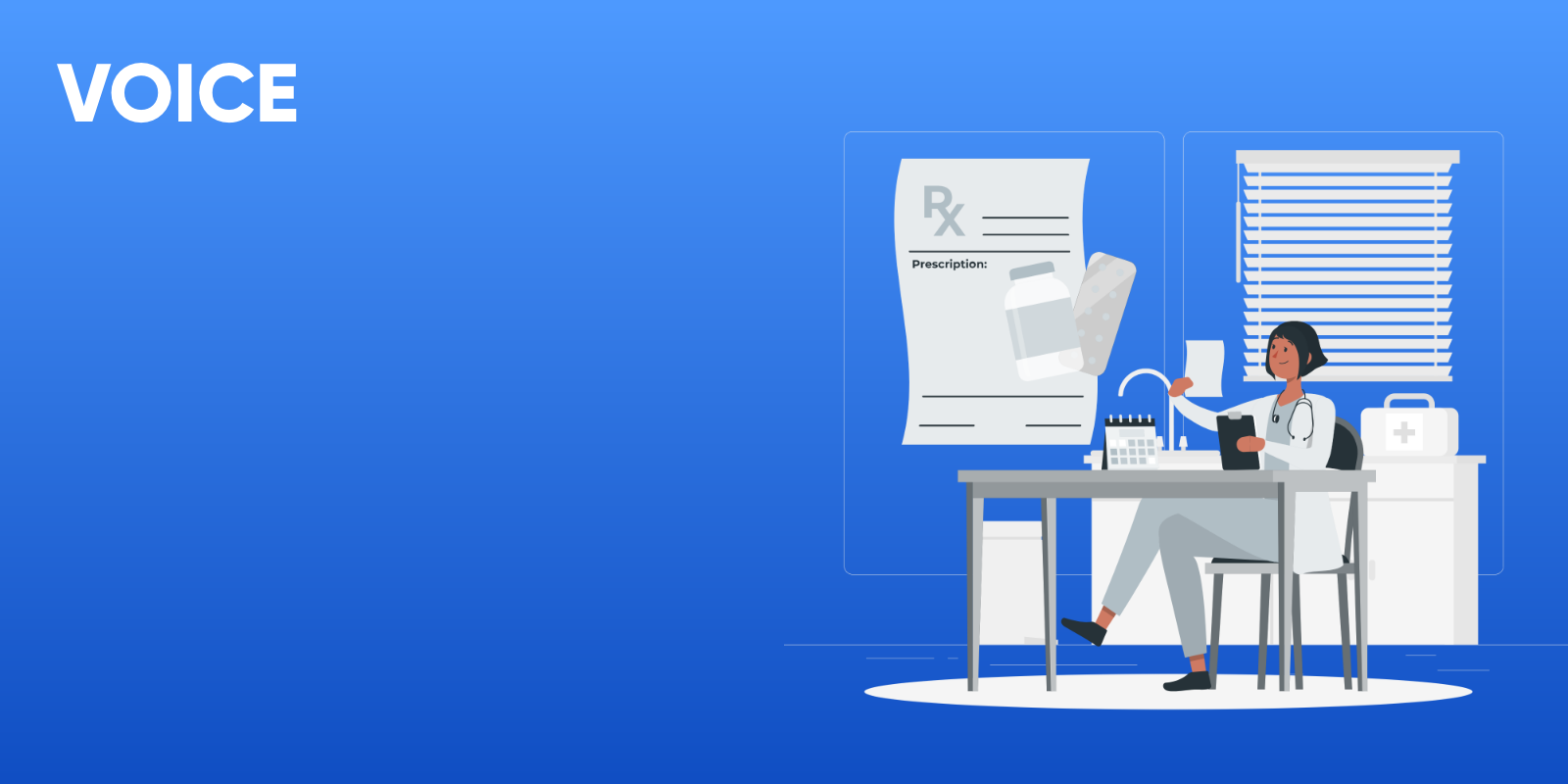
Today, many people across the world are in complete love with Voice technology. In the upcoming years, there will be an introduction of voice technology like Alexa in the healthcare industry too. An effective and clear solution between healthcare professionals and patients is possible with the inclusion of this technology. Enabling Diabetes Patients to Manage their Solution Effectively In 2018, Alexa Diabetes Challenge was conducted by AWS and Merck & Co. Inc together with a $250,000 prize pot. Wellpepper won the Sugarpod. Alexa can be helpful for diabetic patients for monitoring their treatment and progress effectively using Sugarpod. In the same fashion, voice technology like Alexa can be helpful in monitoring chronic diseases.
Enhancing interaction in the hospital
One of the startups in Los Angeles was using the Alexa-enabled platform for communication purposes between patients and caretakers. Voice technology like Alexa enables patients to call their caretakers or switch on/off the television using their smart devices. As a matter of fact, some experts believe that these interactive technologies reduce the loneliness feeling for patients and they can get assistance as well using this technology.
Managing blood pressure with Alexa Skills
Voice technology can help manage blood pressure using Alexa skills. One of the companies named Omron launched a watch, called “HeartGuide”. This watch could measure the blood pressure and send readings as well using the Alexa skill which can be of great help for patients.
Reducing wait times
Using Alexa skills hospitals can reduce waiting time for patients by providing them with the correct information which can also reduce the patient’s stress. This will let patients reach before their health condition gets serious.
Internet of Things
Interactions between doctors and patients were quite difficult as they had options of physical visits or text communications. Before the Internet of Things, healthcare professionals or hospitals were facing difficulty in monitoring a patient’s health condition on a regular basis and taking action accordingly.
In the healthcare industry, IoT-enabled devices enable healthcare professionals to provide better care and monitor patients’ health. IoT has made communication between patients and doctors efficient and easier. IoT reduces healthcare costs by decreasing the stay duration in the hospital. This technology also helps in improving treatment outcomes. Hospitals, patients, insurance companies, etc. are leveraging the benefits of IoT implementation in healthcare.
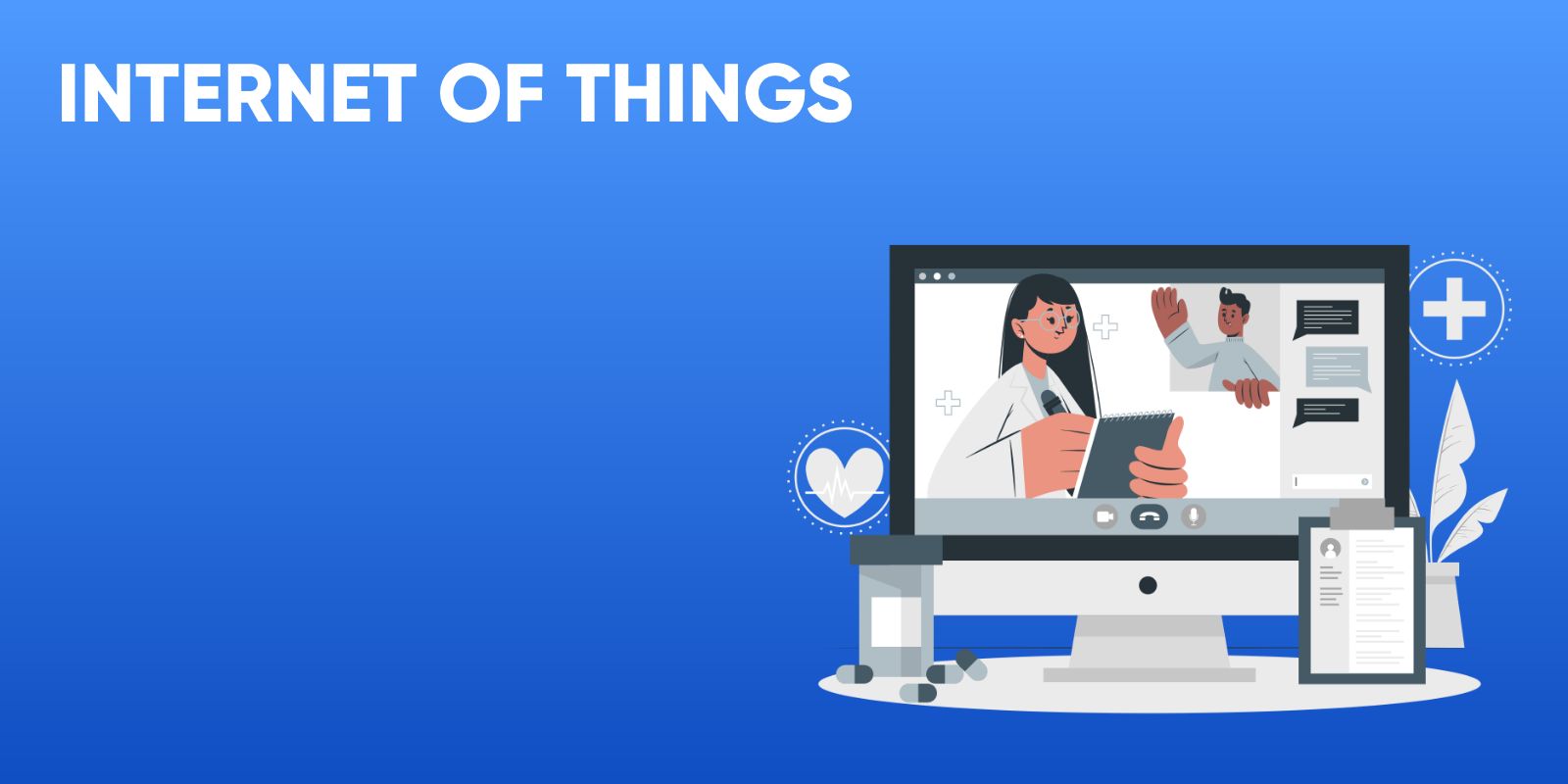
IoT for physicians
Physicians can monitor patients’ health in real life with the help of home monitoring equipment that is embedded with IoT sensors and wearable devices. Interactions become much easier and more proactive with the help of IoT. The data which is collected through IoT helps healthcare professionals find out the best treatment for their patients which will provide expected results.
IoT for patients
Fitness bands and wirelessly connected heart rate monitoring cuffs are devices that improve the personalized attention that patients receive from their respective healthcare professionals. IoT devices remind the patient regarding their appointment with a doctor, number of steps taken in a day, calorie count, heart rate, blood pressure, and various other things. As we know that IoT enables real-time this is why it is extremely beneficial for elderly patients. Moreover, IoT uses an alert mechanism to send a notification to their respective healthcare provider and family members.
IoT for hospitals and clinics
Not to mention, different areas of the hospital use IoT devices as well. Furthermore, the devices that have sensors help in knowing the location of medical equipment like nebulizers, oxygen pumps, wheelchairs, etc.
One of the main concerns for any hospital is to avoid the spread of infections. IoT-based hygiene monitoring devices help us to do so. They work well to prevent patients from further harm. For example, smart IoT-enabled cameras are helpful to have a look at the routine of patients like whether they have washed and sanitized their hands before eating their food or the visitors are not coming in close contact with patients, etc.
As a matter of fact, the management of assets like monitoring refrigerator temperature and humidity can use IoT devices.
IoT for hospitals and clinics
Not to mention, different areas of the hospital use IoT devices as well. Furthermore, the devices that have sensors help in knowing the location of medical equipment like nebulizers, oxygen pumps, wheelchairs, etc.
One of the main concerns for any hospital is to avoid the spread of infections. IoT-based hygiene monitoring devices help us to do so. They work well to prevent patients from further harm. For example, smart IoT-enabled cameras are helpful to have a look at the routine of patients like whether they have washed and sanitized their hands before eating their food or the visitors are not coming in close contact with patients, etc.
As a matter of fact, the management of assets like monitoring refrigerator temperature and humidity can use IoT devices.
IoT for health insurance companies
With the use of IoT-connected devices, health insurers can Digital Transformation in the healthcare industry. Insurance companies can use data captured from health monitoring devices to find out fraudulent claims and identify underwriting surveys. IoT devices increase the transparency between insurers and customers in claims management, pricing, and underwriting and also help in the risk assessment process. Not to mention, the insurers should gratify customers, thus retaining them for using and sharing the health data which IoT devices record.
They can also give impetus if a person tracks his routine and is maintaining a healthy lifestyle. It eventually helps insurers to reduce claims vastly. Claims can also be verified by using the data generated from IoT devices. With the help of a large amount of data captured by IoT devices, it can also contribute to digital transformation.
Not to mention, IoT has an easy four-step system that any industry can use it.
Leading Healthcare Companies That Are Leveraging The Power Of Digitization
Native apps are designed to run on a certain operating system and are built in a native programming language. The majority of smartphones run the Android operating system or if it’s an apple device, the iOS operating system.
Native Apps are designed expressly for a given operating system to take advantage of the features available on the devices that run that operating system. As a result, native programs cannot run on multiple operating systems. To put it another way, you can’t use iOS apps on Android phones and vice versa.
Because they are designed for a certain OS, the programming languages in which they are written are also specialized to that OS. For iOS apps, Xcode and Objective-C are commonly utilized, while Eclipse and Java are commonly used for Android apps.
Native apps are designed to take advantage of all of the phone’s features and tools, such as contacts, cameras, and sensors. These apps provide a high-performance and pleasant user experience because they are built using the native device UI.
The apps can be found in the app stores for each operating system. For example, native Android apps can be found on the Google Play Store, iOS apps on the App Store, and Windows apps on the Microsoft Store, among other places.
In Conclusion
With revolution and digitization, new trends are emerging in the healthcare industry frequently. Also, many hospitals or clinics are implementing it and it has become an ongoing process. You have to think beyond your imagination for implementing these technologies in the healthcare industry and drive innovation. You can choose the technology based on your requirements for delivering better patient care. If you are looking to build a technology solution for your healthcare startup or healthcare institute, contact our healthcare software developers now.
FAQs
Which technologies are transforming the healthcare industry?
Here are a few technologies that are transforming the healthcare industry:
Telemedicine
Virtual Reality
Big Data
Artificial Intelligence
Voice
Internet of Things
Why Echoinnovate IT is the leading healthcare app development company?
Healthcare app developers at Echoinnovate IT hold extensive functional experience in patients’ apps, doctors’ apps, and healthcare information systems. From new hardware to wearable, from iOS to Android devices, our proficiency in healthcare software solutions keeps our clients ahead of the curve. We at Echoinnovate IT, provide top-notch services at reasonable prices. For more info, contact us now!
What is digital transformation in healthcare?
Digital transformation in healthcare refers to the use of technologies like AI, mobile apps, telehealth, IoT, and cloud computing to improve healthcare delivery, enhance patient outcomes, and streamline operations.
Why are mobile apps important in healthcare in 2025?
Mobile apps offer patients real-time access to care, medication tracking, health records, and virtual consultations, making healthcare more personalized and accessible from Android and iOS devices.
How is AI transforming healthcare?
AI supports diagnostics, predicts health risks, automates workflows, and powers virtual assistants that guide patients through triage and care decisions—all improving speed and accuracy in treatment.
What role does telehealth play in the future of healthcare?
Telehealth enables remote consultations, follow-ups, and virtual treatments, reducing wait times and improving access to care, especially for rural and underserved communities.
How does IoMT impact digital healthcare?
The Internet of Medical Things connects devices that track vitals, symptoms, and activity levels in real time, feeding data to healthcare providers for proactive interventions and continuous care.
What are the benefits of using Android and iOS apps in healthcare?
Both Android and iOS platforms offer scalable, secure, and user-friendly interfaces for delivering healthcare services, improving patient engagement and retention.
How does 5G enhance mobile healthcare apps?
5G provides faster connectivity and lower latency, allowing real-time video consultations, faster file transfers, and seamless integration of smart medical devices into healthcare systems.
